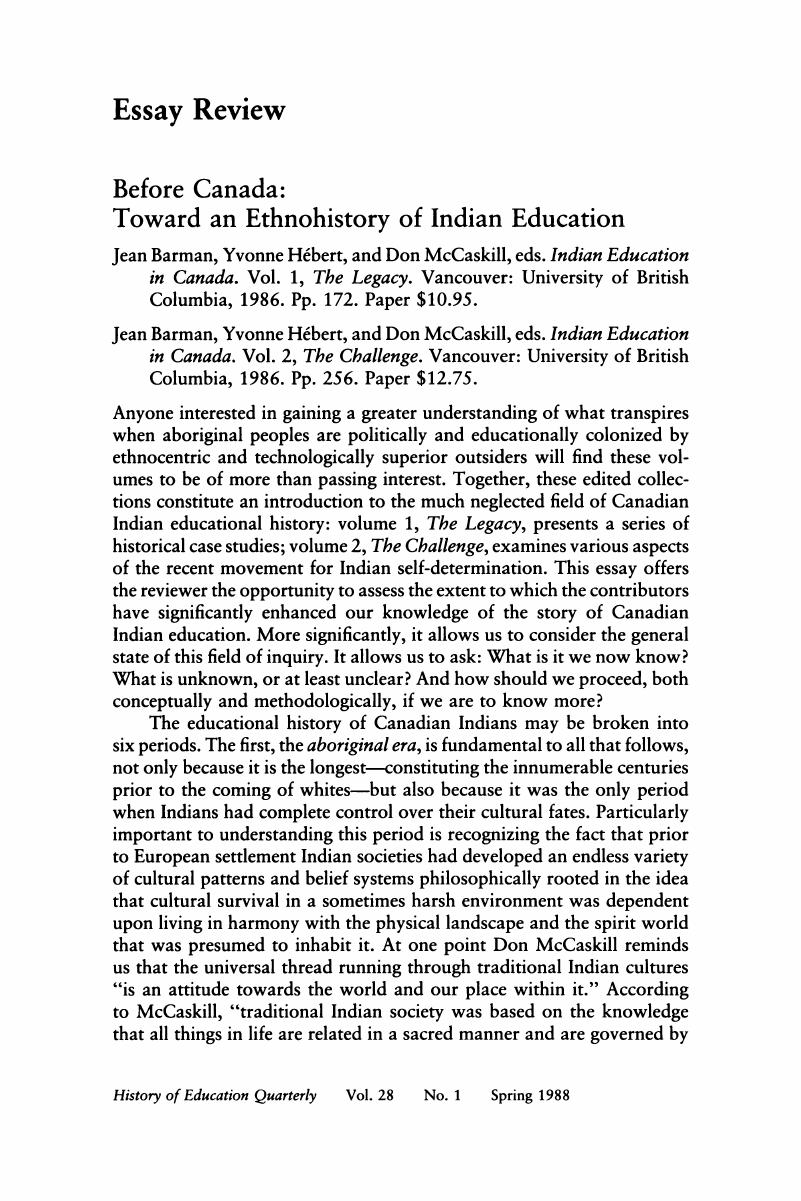No CrossRef data available.
Published online by Cambridge University Press: 24 February 2017

1 The ethnohistorical perspective is adopted by several contributors to Calvin Martin, ed., The American Indian and the Problem of History (New York, 1987). Also see Calvin Martin, “Ethnohistory: A Better Way to Write Indian History,” Western Historical Quarterly 9 (Jan. 1978): 41–56; James Axtell, The European and the Indian: Essays in the Ethnohistory of Colonial North America (New York, 1981), ch. 1; Bruce Trigger, “The Historians’ Indian: Native Americans in Canadian Historical Writing from Charlevoix to the Present,” Canadian Historical Review 67 (Sept. 1986): 315–42; and Robert F. Berkhofer, A Behavioral Approach to Historical Analysis (New York, 1969), esp. ch. 6. Examples of ethnohistory include Bruce G. Trigger, The Children of Aataentsic: A History of the Huron People to 1660, 2 vols. (Montreal, 1976); James Axtell, The Invasion Within: The Contest of Cultures in Colonial North America (New York, 1985); and Calvin Martin, Keepers of the Game (Berkeley, 1978).Google Scholar
2 Martin, Calvin “The Metaphysics of Writing Indian-White History,“ in The American Indian, ed. Martin, 27.Google Scholar
3 The subject of Indian response to white schooling has recently received considerable attention by historians. Much of this attention has focused on the period of the nineteenth century. See Jacqueline Gresko, “White ‘Rites’ and Indian ‘Rites': Indian Education and Native Responses in the West, 1870–1910,” in Western Canada: Past and Present, ed., A. W. Rasporich (Calgary, 1975), 163–82; Michael C. Coleman, “The Mission Education of Francis La Flesche: An Indian Response to the Presbyterian Boarding School in the 1860s,” American Studies in Scandinavia 18 (1986): 67–82; Coleman, “The Responses of American Indian Children to Presbyterian Schooling in the Nineteenth Century: An Analysis through Missionary Sources,” History of Education Quarterly 27 (Winter 1987); David Wallace Adams, “Schooling the Hopi: Federal Indian Policy Writ Small, 1887–1917,” Pacific Historical Review 48 (Aug. 1979): 335–56; and Wilbert H. Ahern, “ ‘The Returned Indians': Hampton Institute and Its Indian Alumni, 1879–1893,” Journal of Ethnic Studies 10 (Winter 1983): 101–24.Google Scholar
4 Berkhofer, Robert F. Jr., “Cultural Pluralism versus Ethnocentrism in the New Indian History,” in The American Indian, ed. Martin, 40.Google Scholar
5 Ridington, Robin “Fox and Chickadee,“ in The American Indian, ed. Martin, 130.Google Scholar